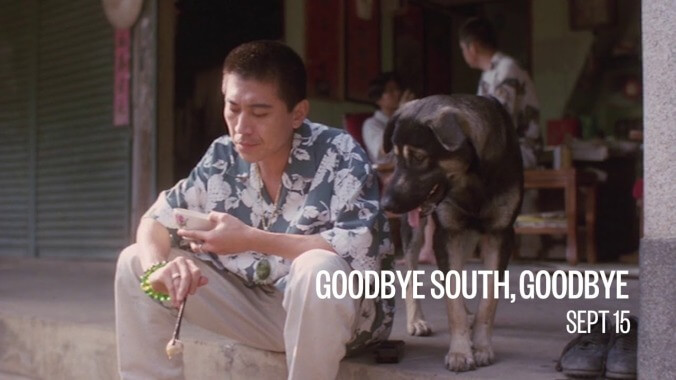Love Roma? Then check out this gorgeous triptych from a kindred spirit of Alfonso Cuarón

Watch This offers movie recommendations inspired by new releases or premieres, or occasionally our own inscrutable whims. With the Academy Awards right around the corner, we’re suggesting the perfect pairings for this year’s Best Picture nominees—movies to watch with, or instead of, each of them.
Three Times (2005)
Inspired in large part by the filmmaker’s childhood in Mexico City, Alfonso Cuarón’s Best Picture nominee Roma is a personal film that’s unlike anything else this tech whiz of images and effects has made. In fact, its closest points of comparison are found not in Cuarón’s earlier Mexican features (Sólo Con Tu Pareja and the more famous Y Tu Mamá También), but in the great Taiwanese cinema of the 1980s, ’90s, and early 2000s. While there is something of the late Edward Yang (A Brighter Summer Day, Yi Yi) to its multi-generational cast of characters and novelistic arc, what Roma brings to mind most often are the movies of Hou Hsiao-hsien: the intimate period surroundings; the sense of historical and personal trauma; the class-conscious conflicts of longing and obligation; even the use of dialogue in both Spanish and Mixtec. Which is to say that, if you like Roma, this is where you should look next.
But where does one begin? Although he’s been making masterpieces since at least the late ’80s and generated a considerable influence on filmmakers around the world (including American directors like James Gray and Barry Jenkins), Hou’s name recognition with Stateside audiences has never been what it should be—largely because of distribution. His 1989 classic, A City Of Sadness, has never been released in this country, while 1993’s Cannes prizewinner The Puppetmaster and 1998’s narcotic Flowers Of Shanghai were belatedly released to DVD in 2002—at which point The A.V. Club referred to Hou as “almost a mythical figure in this country, the fabled territory of big-city cineastes and film-festival circuiteers.” (Both discs are now long, long out-of-print and command princely sums.)
Although it isn’t his best work, 2005’s gorgeous, aching Three Times more or less lives up to its reputation as a Hou sampler. One of the first Hou films to get a theatrical release in the U.S., the movie actually consists of three different and atmospherically distinct stories that star the same actors, Shu Qi and Chang Chen, offering variations on one of the filmmaker’s big, career-long themes: that our feelings are entangled in the times in which we’re born. The first and most optimistic, “A Time For Love,” is set in the mid-1960s of Hou’s youth, and features Chang as a young soldier and Shu as a hostess at the pool hall where he hangs out during a humid summer. “A Time For Freedom,” which features no spoken dialogue, is set in the early 1910s, entirely within the confines of an upscale brothel, with Shu as a courtesan and Chang as a regular customer who is involved in the Taiwanese independence movement. In “A Time For Youth,” the two are cast as hip, disaffected bohemians in the fluorescent-cool, ennui-soaked cityscape of mid-2000s Taipei.
All three are, in a sense, period pieces: The emphasis on social conventions and routines—from the racking of the billiard balls to the lighting of the oil lamps—in the first two parts throws the third into a harsh light, revealing the (then) present as another moment in national history that people were bound up in. (Communication is the major sub-theme: The text dialogue of “A Time For Freedom” reflects a literary world of letters, political pamphlets, and romanticized silent movies; the 1960s section has dialogue in Hokkien-Taiwanese, while the characters of the 2000s section speak Mandarin when they bother to speak at all.) Taken together, these three stories don’t approach the scope of Hou’s greatest films. But they still make an intoxicating introduction to a major film artist with a lot to say about the worlds we’ve lived in.
Availability: Three Times is available to rent or purchase from Amazon Prime. It can also be obtained on DVD from Amazon, Netflix, or possibly your local video store/library.